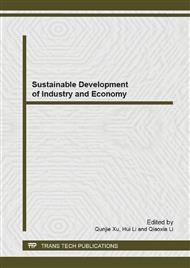p.420
p.426
p.432
p.439
p.443
p.448
p.456
p.462
p.466
Access Pricing Policy Reform Suggestions in Chinas Natural Gas Pipeline Industry Based on the Experiences in America
Abstract:
The growing natural gas consumption asks for larger scale of pipelines and arouses criticism on separation pipelines business from national oil and gas monopoly companies in China. Through reviewing of Americas regulatory practices on access pricing policy in the gas pipeline industry and summarizing the evolution of access pricing theory on network economics, we conclude some suggestions on the reform process of Chinas pipeline access regulation policy by comparing and contrasting the industrial environments major differences between China and America. We emphasize the importance of executing non-discrimination access price policy in the spirit of Anti-Monopoly Law and indicate that simple separation isnt the most effective way to increase social welfare nowadays. Regulatory agency should prohibit abusing market power and decrease cost information asymmetric in cross-subsidy activity.
Info:
Periodical:
Pages:
443-447
Citation:
Online since:
December 2013
Authors:
Price:
Сopyright:
© 2014 Trans Tech Publications Ltd. All Rights Reserved
Share:
Citation:


